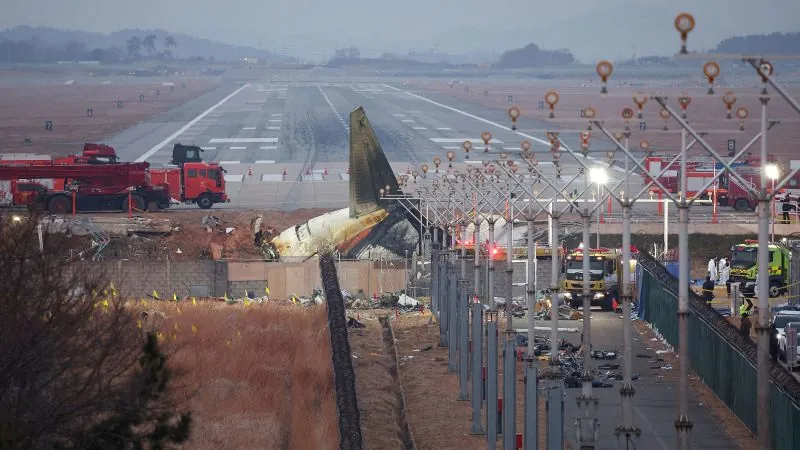
South Korea Plane Crash: Black Boxes Ceased Functioning Minutes Before Catastrophe, Raising Questions
2025-01-11
Author: Wei
Investigators piecing together tragic events
Investigators are now piecing together the tragic events surrounding the catastrophic crash of Jeju Air flight 7C 2216, which occurred last month in South Korea, leading to the deaths of 179 passengers and crew members, with only two survivors emerging from the wreckage.
Details of the crash
On December 29, the Boeing 737-800, en route from Bangkok, performed a belly-landing at Muan International Airport before erupting into flames. As authorities delve into South Korea's deadliest aviation incident since 1997, hopes were high for answers from the aircraft's flight recorders, commonly known as "black boxes." However, officials revealed this past Saturday that both the cockpit voice recorder (CVR) and flight data recorder (FDR) had stopped recording approximately four minutes prior to the disaster.
Loss of data
The South Korean Transport Ministry confirmed that the reason behind the sudden loss of data is still unknown, emphasizing its commitment to investigating the underlying causes. In their statement, the ministry highlighted the significance of both recorders in understanding the crash but reassured that a comprehensive analysis involving various data points will be conducted.
Efforts to recover evidence
In an effort to recover evidence, the damaged flight data recorder, found missing a connector, was dispatched to the U.S. National Transportation Safety Board for further examination after local authorities acknowledged their inability to extract functional data.
Significance of the event
This harrowing event stands as the nation's most significant aviation disaster since the Korean Air Lines Boeing 747 crash in Guam that claimed 228 lives. The investigation, expected to be extensive, is still in its infancy as officials piece together the circumstances surrounding the crash.
Eyewitness accounts and landing issues
Eyewitness footage of the incident reveals a startling lack of visible landing gear, leading to speculation about the plane's preparation for landing. Just prior to the emergency landing, the pilot issued a mayday call, mentioning "bird strike" and "go-around," prompting the control tower to alert him of birds in the vicinity—a critical detail that could have implications for flight safety protocols in similar situations.
Airport design concerns
Another element raising eyebrows is the concrete embankment struck by the aircraft during its landing procedure. Aviation experts suggest that many airports do not position such structures so close to runways, sparking discussions about airport design regulations.
Intensified investigations by police
In a related development, South Korean police have intensified their investigation by conducting searches at Jeju Air's offices in Seoul and Muan International Airport, aiming to uncover more about the circumstances leading to this unimaginable tragedy.
Lingering questions
As authorities continue to sift through the wreckage of the investigation, the pressing questions grow louder: What led to the tragic failure of the black boxes, and could more stringent safety measures have prevented this harrowing loss of life? Stay tuned as we uncover more details in the days ahead.



 Brasil (PT)
Brasil (PT)
 Canada (EN)
Canada (EN)
 Chile (ES)
Chile (ES)
 Česko (CS)
Česko (CS)
 대한민국 (KO)
대한민국 (KO)
 España (ES)
España (ES)
 France (FR)
France (FR)
 Hong Kong (EN)
Hong Kong (EN)
 Italia (IT)
Italia (IT)
 日本 (JA)
日本 (JA)
 Magyarország (HU)
Magyarország (HU)
 Norge (NO)
Norge (NO)
 Polska (PL)
Polska (PL)
 Schweiz (DE)
Schweiz (DE)
 Singapore (EN)
Singapore (EN)
 Sverige (SV)
Sverige (SV)
 Suomi (FI)
Suomi (FI)
 Türkiye (TR)
Türkiye (TR)
 الإمارات العربية المتحدة (AR)
الإمارات العربية المتحدة (AR)